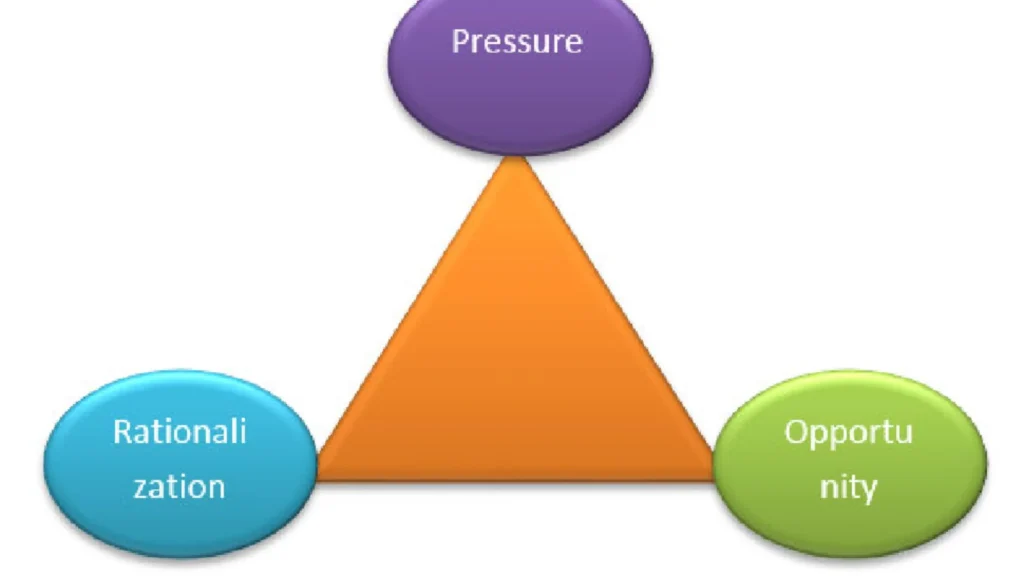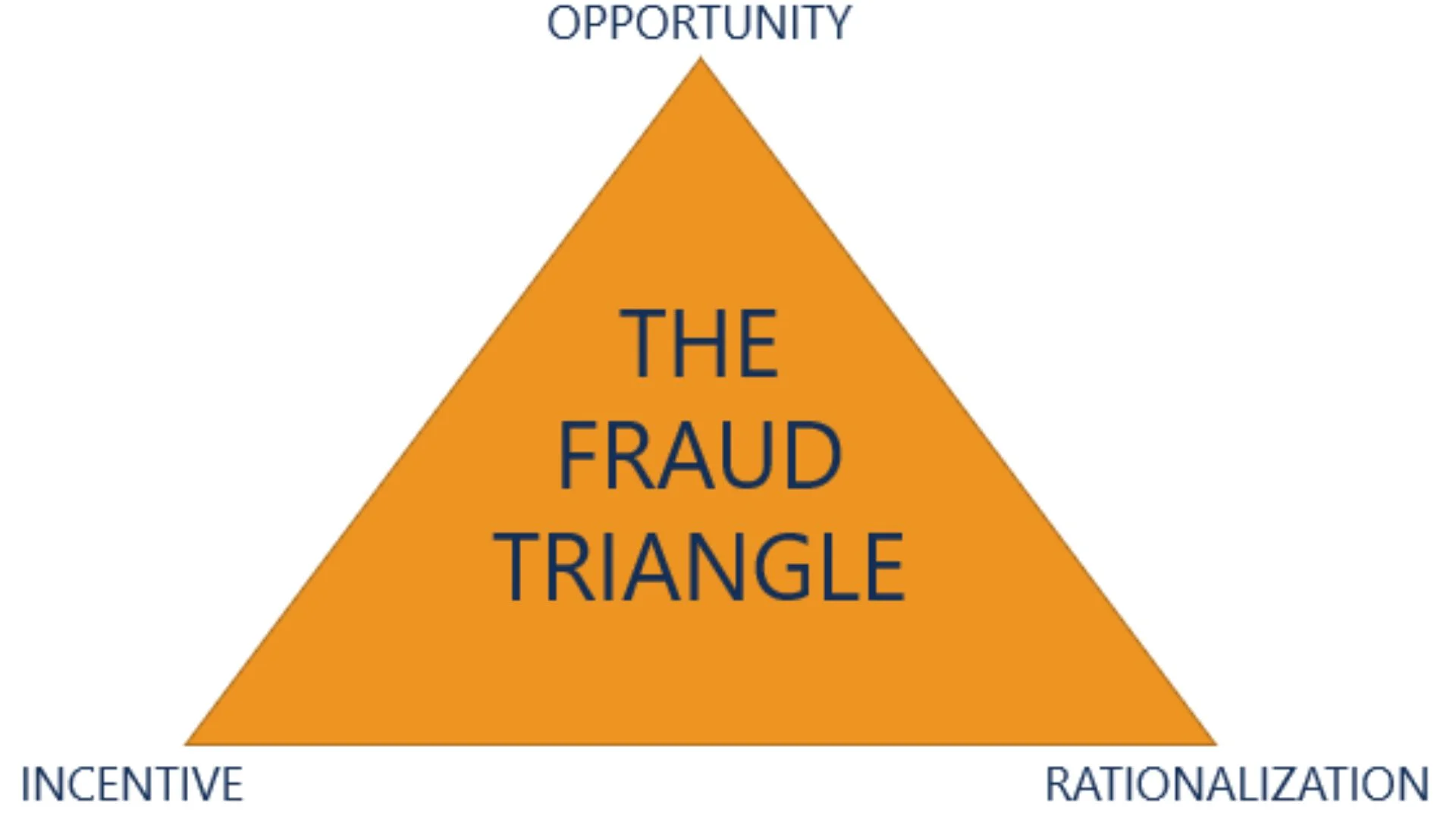Fraud risk is a pervasive and ever-evolving challenge that organizations of all sizes and industries must contend with. At its core, fraud risk refers to the likelihood and potential impact of intentional acts of deception, misrepresentation, or misappropriation that are carried out for the purpose of personal gain or to cause harm to an entity.
This can take many forms, from employee theft and misuse of company resources to sophisticated schemes involving complex financial transactions, cybercrime, and identity theft.
The scope of fraud risk is far-reaching, touching every aspect of an organization’s operations and financial wellbeing. Depending on the nature and scale of the fraudulent activity, the consequences can be severe, including significant financial losses
, reputational damage,
regulatory sanctions, and even criminal prosecution. Moreover, the ripple effects of fraud can extend well beyond the immediate victim, impacting shareholders, customers, suppliers, and the broader community.
To effectively manage fraud risk, organizations must adopt a comprehensive,
multifaceted approach that combines robust internal controls, vigilant monitoring and detection mechanisms, and a strong anti-fraud culture. This requires a deep understanding of the evolving fraud landscape,
as well as the development and implementation of tailored strategies and best practices to mitigate the unique risks faced by the organization.
Identifying and Assessing Fraud Risks[/h2]
The first step in managing fraud risk is to conduct a thorough risk assessment to identify the organization’s key vulnerabilities and potential entry points for fraudulent activity. This process typically involves a careful examination of the organization’s internal and external operating environment, including:
- Financial Processes and Controls: Analyzing the design and effectiveness of financial controls, such as segregation of duties,
approvals, reconciliations, and access restrictions,
to identify potential weaknesses that could be exploited. - Information Technology and Cybersecurity: Evaluating the organization’s
IT infrastructure, data security measures,
and incident response protocols to assess the risk of cyber-enabled fraud, such as data breaches, phishing scams, and ransomware attacks. - Employee Behavior and Culture: Assessing the organization’s employee screening and monitoring processes, as well as the overall tone and culture around fraud prevention and detection.
- Regulatory and Compliance Landscape: Understanding the relevant laws,
regulations, and industry standards that govern the organization’s operations and the potential consequences of non-compliance. - Third-Party Relationships: Scrutinizing the organization’s relationships with vendors, suppliers, and other external stakeholders to identify any heightened fraud risks associated with these partnerships.
By conducting a comprehensive risk assessment,
organizations can develop a robust understanding of their fraud risk profile and prioritize the implementation of targeted mitigation strategies.
Once the organization’s fraud risks have been identified and assessed,
the next step is to implement a comprehensive fraud risk management framework. This framework should encompass the following key components:
- Governance and Oversight: Establishing clear lines of accountability and responsibility for fraud risk management,
with a dedicated task force or committee responsible for overseeing the organization’s anti-fraud efforts. - Policies and Procedures: Developing and regularly reviewing a comprehensive set of policies and procedures that define the organization’s approach to fraud prevention, detection, and response.
- Internal Controls: Designing and implementing a system of internal controls,
including segregation of duties, authorization limits, and reconciliation processes, to mitigate the risk of fraudulent activities. - Fraud Detection and Monitoring: Implementing robust fraud detection and monitoring mechanisms, such as data analytics, continuous auditing, and whistleblower hotlines,
to identify and respond to potential fraudulent activities in a timely manner. - Incident Response and Investigation: Establishing a clear and well-documented process for responding to and investigating suspected instances of fraud,
including protocols for evidence collection, witness interviews, and coordination with law enforcement or regulatory authorities. - Training and Awareness: Providing ongoing fraud awareness training and education to all employees, ensuring they are equipped with the knowledge and skills to recognize and report potential fraud.
- Continuous Improvement: Regularly reviewing and updating the fraud risk management framework to adapt to evolving fraud trends, changes in the organization’s operating environment, and lessons learned from past incidents.
By implementing a comprehensive fraud risk management framework, organizations can significantly enhance their ability to prevent, detect,
and respond to fraudulent activities, thereby protecting their financial, reputational, and operational integrity.
In today’s digital age, technology has become a critical enabler in the fight against fraud. Organizations can leverage a wide range of advanced technologies and tools to strengthen their fraud detection and prevention capabilities, including:
- Data Analytics and Artificial Intelligence (AI): Implementing sophisticated data analytics and AI algorithms to identify patterns, anomalies,
and suspicious transactions that may indicate fraudulent activity. - Biometric Authentication: Utilizing biometric technologies,
such as facial recognition, fingerprint scanning, and voice authentication, to enhance access controls and prevent identity-based fraud. - Blockchain and Distributed Ledger Technology: Exploring the use of blockchain and distributed ledger technology to create a secure,
tamper-evident record of transactions, reducing the risk of fraud in areas such as supply chain management and financial reporting. - Robotic Process Automation (RPA): Automating repetitive, rules-based tasks, such as invoice processing and expense reporting, to reduce the risk of human error and potential for fraud.
- Cybersecurity Tools: Implementing a comprehensive suite of cybersecurity tools,
including firewalls, intrusion detection and prevention systems, and endpoint protection,
to mitigate the risk of cyber-enabled fraud. - Continuous Monitoring and Auditing: Leveraging data analytics and process automation to enable real-time monitoring and auditing of transactions, contracts,
and other critical business processes.
By strategically integrating these and other emerging technologies into their fraud risk management framework, organizations can significantly enhance their ability to detect, prevent,
and respond to fraudulent activities, ultimately safeguarding their financial, operational, and reputational integrity.

While robust internal controls and advanced technologies are essential components of an effective fraud risk management strategy,
the success of these efforts ultimately depends on the organization’s ability to cultivate a strong anti-fraud culture. This involves:
- Tone at the Top: Ensuring that the organization’s leadership,
from the board of directors to the executive team, consistently demonstrates a steadfast commitment to fraud prevention and a zero-tolerance approach to unethical behavior. - Employee Engagement and Education: Providing ongoing training and awareness programs to educate all employees on the importance of fraud prevention,
the recognition of red flags, and the proper channels for reporting suspected misconduct. - Whistleblower Protections: Establishing a robust whistleblower program that encourages employees to report suspected fraud or other unethical activities,
while also providing strong protections against retaliation. - Accountability and Consequences: Implementing clear and consistent disciplinary measures for employees who engage in fraudulent or unethical conduct,
reinforcing the organization’s commitment to maintaining a culture of integrity. - Collaboration and Information Sharing: Fostering a collaborative environment that encourages the sharing of fraud-related intelligence and best practices among the organization’s
various departments and functions, as well as with external partners and industry peers.
By cultivating a strong anti-fraud culture, organizations can empower their employees to be active participants in the fight against fraud, leveraging their unique perspectives and insights to identify and mitigate emerging threats.
[h2]Navigating the Regulatory Landscape and Ensuring Compliance[/h2]As organizations strive to manage their fraud risk, they must also navigate a complex and ever-evolving regulatory landscape. Depending on the industry, jurisdiction, and nature of the organization’s operations, a wide range of laws, regulations, and industry standards may apply, including:
- Financial Reporting and Accounting Standards:
- Certainly! Here are some transition words and phrases that can help you discuss regulations like the Sarbanes-Oxley Act (SOX) and the International Financial Reporting Standards (IFRS):
- Additionally
- Furthermore
- Moreover
- In addition
- Consequently
- As a result
- Similarly
- Likewise
- In contrast
- On the other hand
- However
- Nonetheless
- Despite this
- Conversely
- Thus
- Therefore
- For instance
- To illustrate
- Specifically
- Namely
- Particularly
- In particular
- For example
- Such as
- Including
- Among others
- In the same vein
- Subsequently
- Accordingly
- Hence
- These transitions can help you connect ideas, compare and contrast different regulations, and provide examples or additional details in your discussion.
which aim to enhance the accuracy and transparency of financial reporting and mitigate the risk of financial statement fraud.- Anti-Money Laundering (AML) and Counter-Terrorist Financing (CTF) Regulations: Rules designed to prevent the use of the financial system for the purpose of money laundering or terrorist financing, which may involve complex transaction monitoring and reporting requirements.
- Data Privacy and Cybersecurity Regulations:
Frameworks like the General Data Protection Regulation (GDPR) in the European Union and the Health Insurance Portability and Accountability Act (HIPAA) in the United States, which


1 thought on “THREE – Fraud Risk”